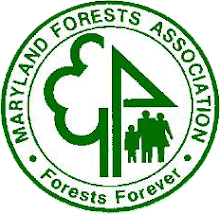Letter to the Editor:
Cumberland Times-News
January 06, 2010 06:32 pm
— Editor’s note: A seminar on Marcellus shale, natural gas extraction and how the gas industry could impact the region’s residents is scheduled today at 6:30 p.m. in the Keyser High School auditorium by the Lycoming County Penn State Cooperative Extension Service.
The Marcellus shale has been the most recent popular topic of exploitation in West Virginia. The shale is described as a black shale because it is black in color, containing kerogen.
Kerogen is not oil. Kerogen is derived from coal-forming materials which accumulated in an oxygen-starved environment and which were subsequently exposed to heat and pressure from overlying sediments and mountain-building processes. Kerogen has a higher molecular weight than oil.
It is “released” from shale by a drilling methodology which uses approximately one million gallons of pressurized water per well (a process called hydraulic fracturing or “hydrofracking”), with the addition of silica (stored in silos and which can potentially release silica dust to the surrounding area: this can cause silicosis in people who breath the silica dust) and chemicals such as surfactants to help release the kerogen.
So far, none of the drilling companies has released the composition of the chemical constituents added to the drilling water. The Marcellus shale contains the following radioactive elements: uranium, thorium, radium 226, radium 228, and radon; it is considered highly radioactive by Hill, D.G., Lombardi, T.E. and Martin, J.P. 2004: “Fractured Shale Gas Potential in New York”; Northeastern Geology and Environmental Sciences, Vol. 26. p.8
The Marcellus shale contains the mineral pyrite (iron sulfide), which forms into sulfuric acid and iron hydroxide when exposed to water and air. The resulting acidic drainage dissolves toxic metals occurring in the surrounding rock, thereby releasing them to the environment.
Toxic metals typically released by acid drainage (the same as coal mining drainage) can include copper, aluminum, cadmium, arsenic, lead, mercury, cobalt, chromium, molybdenum, nickel, vanadium, and zinc.
Problems associated with drilling the Marcellus shale in such wells include: 1) the excessive use of water from nearby rivers and streams, impacting our water resources; 2) the release of radioactive materials (and methane gas) into the air; 3) the release of radioactive materials onto the ground surface and into streams from drill cuttings and from recovery of drilling water directed into streams; 4) the release of radioactive materials into groundwater from “backwashing” of the pressurized water introduced into the well and from underground injection of the used drilling water; and 5) the release of toxic metals and excessive acidity (similar to acid mine drainage) into our streams from drill cuttings and recovered drilling water directed into streams.
Any radioactive methane gas recovered from the well is piped to holding tanks and subsequently transported to major gas lines such as the Tennessee Pipeline in Pennsylvania or the Millennium Pipeline in New York to be sold to the public. Therefore, there are hundreds of miles of numerous pipelines associated with transporting the radioactive methane gas from the wells.
On the Internet, there are numerous Web sites available which provide information on the Marcellus shale and the potential environmental problems which can occur. Some of these sites are: www.statejournal.com/story.cfm?func=viewstory&storyid=42542; www.wvsoro.org/resources/marcellus/OGAPMarcellusShaleReport-6-12-08.pdf ; and www.wvsoro.org/resources/how_a_well_is_drilled/index.html
Pamela C. Dodds, Ph.D.
Registered professional geologist
Montrose, W.Va.



